
Friday’s ad is for Vejle Pilsner, from 1920. From the late 1800s until the 1940s, poster art really came into its own, and in
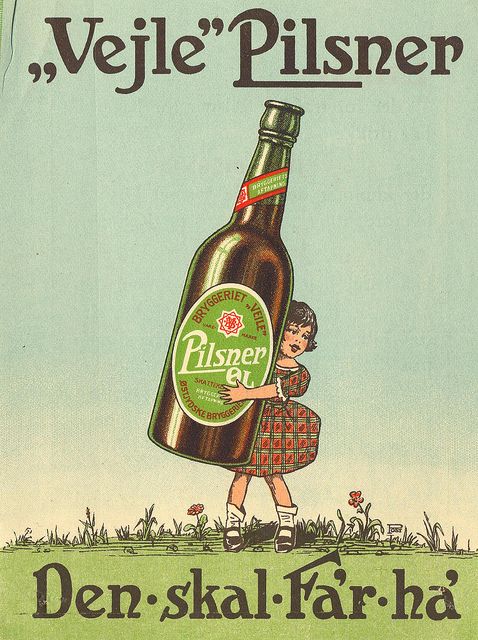
By Jay Brooks

Friday’s ad is for Vejle Pilsner, from 1920. From the late 1800s until the 1940s, poster art really came into its own, and in

By Jay Brooks

Today is the birthday of Danish author Hans Christian Andersen (april 2, 1805-August 4, 1875). Although he wrote numerous plays, travelogues, novels, and poems, Andersen is best known for his fairy tales, like the Little Mermaid, the Emperor’s New Clothes, the Ugly Duckling and the Snow Queen, which was loosely adapted into Disney’s Frozen in 2013. Those are just the highlights, he also wrote many more you’ve probably heard of and undoubtedly quite a bit more you haven’t. One of those lesser known stories is “Ole, The Watchman of the Tower” or “Ole the Tower-Keeper.” It was written in the 1850s and was included as part of his third collection of “New Fairy-Tales and Stories,” which was published in 1859.
It was from this short tale that Boulevard Brewing of Kansas City, Missouri, was inspired to create their Quadrupel (although they also refer to it as a “Belgian Dark Strong Ale”), The Sixth Glass.
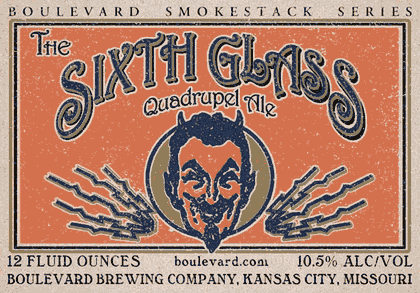
Here’s a synopsis of the story of Ole:
There was a man named Ole who was rumored to be the child of several different people and had been said to have done many interesting things in his life. As time wore on, he became less than enthused with society and decided to become a hermit.
He lived in a church tower because it was the only place where he could easily get bread and still be away from other people. He read books and had visitors around New Years. One person in particular visited him each year around New Years and that person had three stories to tell that Ole had told him.
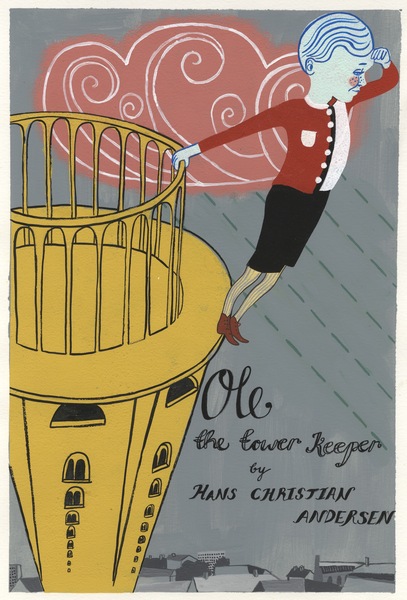
And here’s another, shorter, one:
Our first-person narrator tells us that he likes to visit a watchman of a tower named Ole. He visits twice on New Year’s Eve and hears some kooky stories about cobblestone, the Bible, and alcohol.
But it was during the end of his second of three nights that Ole visited and listened to the Tower-Keeper, after he’d explained about the first five glasses, who was in them, or how they would change you, he told Ole about the sixth glass:
“The sixth glass! Yes, in that glass sits a demon, in the form of a little, well dressed, attractive and very fascinating man, who thoroughly understands you, agrees with you in everything, and becomes quite a second self to you. He has a lantern with him, to give you light as he accompanies you home. There is an old legend about a saint who was allowed to choose one of the seven deadly sins, and who accordingly chose drunkenness, which appeared to him the least, but which led him to commit all the other six. The man’s blood is mingled with that of the demon. It is the sixth glass, and with that the germ of all evil shoots up within us; and each one grows up with a strength like that of the grains of mustard-seed, and shoots up into a tree, and spreads over the whole world: and most people have no choice but to go into the oven, to be re-cast in a new form.
That’s why there’s a devilish demon on the label, because that’s what’s in the bottle, too. Drink it at your own peril. Don’t say you haven’t been warned. Frankly, it only make me want to drink it even more. I love the idea that after reading that passage, founder John McDonald and/or brewmaster Steven Pauwels, were inspired to create a beer fitting that description.
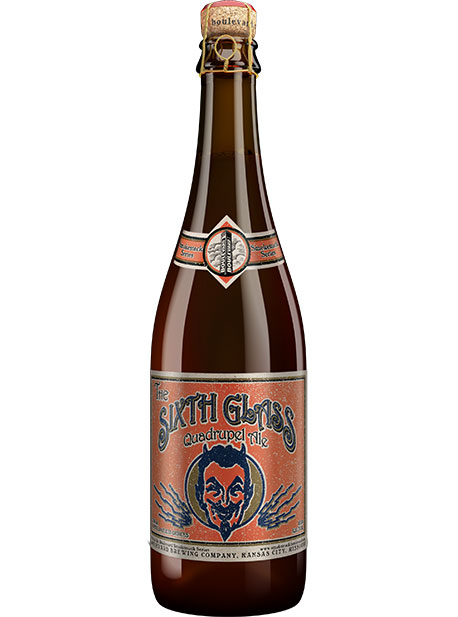
By Jay Brooks
![]()

AleSmith Brewing of San Diego, California announced this morning that they’ve entered into a “creative enterprise” with Mikkel Borg Bjergsø to establish Mikkeller Brewing,” taking over day-to-day operation of San Diego’s second-oldest craft brewing facility. So essentially, as far as I can tell, Mikkel will be taking over the original AleSmith location, with Pete Zien retaining a minority stake in the business. Mikkel will get the older, original 30-barrel brewing system — which will become Mikkeller San Diego — and AleSmith will operate the newer 105,500-square-foot facility located two blocks west of MSD.
San Diego, California (December 8, 2015) — Two world-renowned brewing interests are proud to announce the launch of a creative partnership that will result in the planet’s most famous gypsy brewer acquiring a brick-and-mortar brewery to call his own. Mikkel Borg Bjergsø, the founder and creative mind behind Denmark-based Mikkeller, has officially entered into an agreement with AleSmith Brewing Company owner and brewmaster Peter Zien for the duo to establish a new company called Mikkeller Brewing San Diego. Bjergsø and Zien will possess ownership stakes in the business, which will be based within the storied confines of AleSmith’s original headquarters on Cabot Drive in San Diego’s Miramar community and produce beers for worldwide release.
“People have always asked me when I’m going to open my own brewery, and my answer has always been ‘never.’ It’s the easiest answer, but it’s been on my mind for several years,” says Bjergsø. “I like being a ‘gypsy brewer,’ but know that having a stake in a U.S. brewery will change our position here. Brewing in one of the best breweries in the world really makes sense. If they can brew beers like they do at AleSmith, it really can’t go wrong.”
Bjergsø’s vision will guide brewing operations at Mikkeller San Diego, which is equipped with the same 30-barrel brewing system AleSmith used to produce 15,000 barrels of beer annually before moving into a much larger, 105,500-square-foot facility two blocks west earlier this year. To ensure the fastest, most efficient transition, Zien will initially oversee multiple components of the brewing process and provide ongoing assistance on an as-needed basis. Additionally, several members of AleSmith’s original brewing team, the bulk of whose careers with the company have been spent operating the original brewery, will become employees of Mikkeller San Diego and usher the facility through its exciting second life.
“I am very excited to announce this partnership to the brewing world,” says Zien who will maintain a minority stake in the business. “Mikkel and I expect to create unique and flavorful beers of the highest quality, as we are both known for brewing with AleSmith and Mikkeller.”
Eager to embark on this shared next chapter in their brewing careers, Bjergsø and Zien worked with the eventual Mikkeller San Diego staff to craft two beers based off brand new recipes conceived by the former. Those beers, AleSmith-Mikkeller IPA (India Pale Ale) and AleSmith-Mikkeller APA (American Pale Ale) are currently on tap at Mikkeller Bar in San Francisco, Calif.; AleSmith’s recently debuted 25,000-square-foot Miramar tasting room; and numerous craft beer-centric venues throughout San Diego County. Thus far, they have been met positively by beer enthusiasts. Next up on the brew schedule is an imperial take on an English-style porter, which will be released via a similar distribution method. Eventually, numerous Mikkeller San Diego beers will be bottled, canned, and distributed more widely nationally and internationally.
In addition to beers brewed solely by Mikkeller San Diego personnel, Bjergsø intends to make a center of craft collaboration of his new digs by inviting respected brewers from all over the world to conceive and brew recipes that push the envelopes of what ales and lagers can be. In doing so, he will build off relationships forged during his decade spent trotting the globe in an ongoing mission to bring his beery ideas to life with the help of gifted brewers the world over. He will also reach out to new and upcoming brewers making waves within the industry, providing the basis for many happy returns among brewery visitors.
While the brewing component of Mikkeller San Diego’s campus—which consists of five suites within an intimate business complex—will remain mostly untouched, construction will soon commence to convert the 750-square-foot tasting room to an interior design concept more consistent with that of Mikkeller’s global beer bars. The sampling space is projected to open to the public in early 2016, offering an array of beers that simultaneously display traditionally stylistic roots while coming across as exploratory, adventurous and, in some cases, downright twisted. It will be the only place in the world to taste the entire array of Mikkeller San Diego beers in a single sitting.
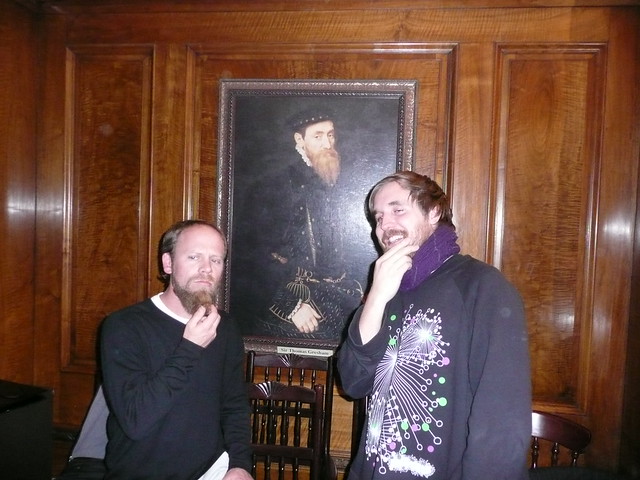
Matt Brynildson, from Firestone Walker, and Mikkel comparing beards with Sir Thomas Gresham at a pub in London.
By Jay Brooks

Saturday’s ad is for Carlsberg, from 1955. This is the third one of these narrow Carlsberg ads from the same time using the tagline “The Call is for Carlsberg. Lager at its best!” The weird horn players are apparently a parody of the Luur Players statue in Denmark, although they claim it’s “famous” I couldn’t find any information about it on a quick search, not even that it just exists, so maybe they were trying to be funny.

By Jay Brooks

Wednesday’s ad is for Carlsberg, from 1968. Although Carlsberg was founded in 1847, apparently they first started exporting in 1868, so 100 years later, in 1968, they created a special beer for the UK market. It was “specially brewed for the British taste,” whatever that might have been. NOt sure how rare that would have been, but I guess give them points for trying something newish.
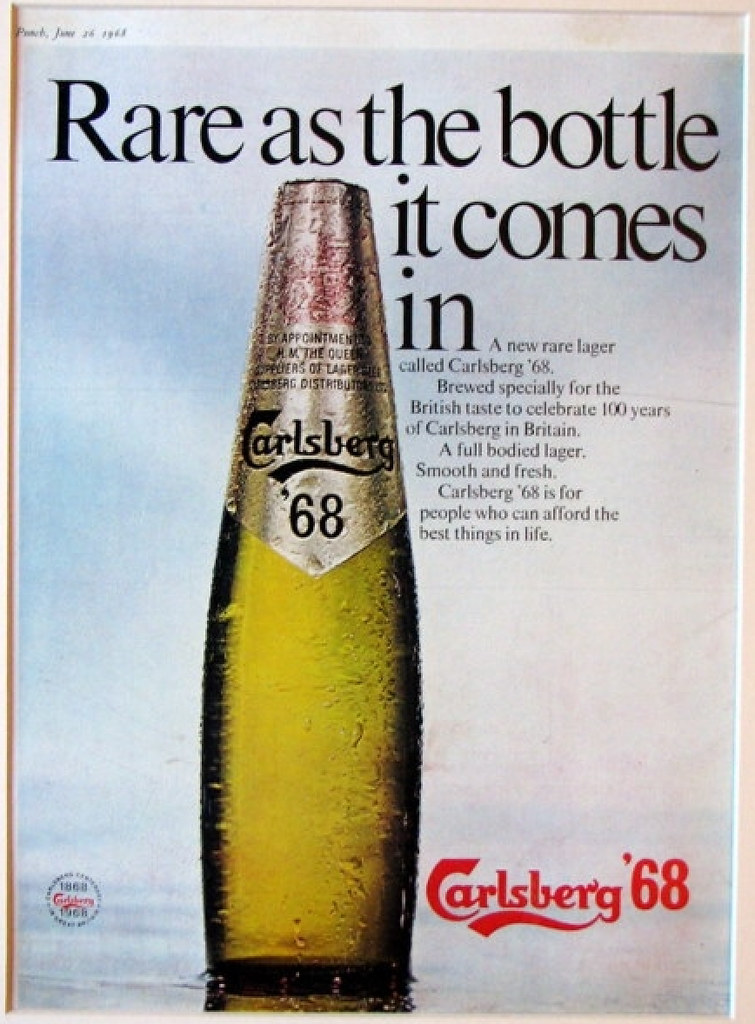
By Jay Brooks

I may not be a woman, but I grew up around them quite a lot as a child, perhaps more than some others (my folks divorced when I was one and I spent most of my formative years among my mother, grandmothers, aunts, etc.) and am fully in touch with my feminine side. Plus, I love quite a few women — one a lot more than others — but count quite a few among my closest friends. So I cringe every time I read about the efforts of big companies to market beer directly to women, believing all it will take to increase market share is more attractive packaging or sweeter flavors. How many of these failed efforts have we endured in just the last decade?
A few days ago, yet another one surfaced, in a Fast Company interview with Carlsberg Group CEO Jorgen Buhl Rasmussen entitled Carlsberg Taps The Next Big Beer Market (Really): Women. This morning, I saw quite a few exasperated tweets and posts from women in the beer industry that I respect, and decided to read the interview. It’s a head-shaker, alright. Riddled with so much wrong, it’s hard to address it all, so I won’t. I’m sure someone will dissect it better than I can.
But, just a few points. First, Rasmussen claims that the “beer category has been suffering in terms of image,” but for just “the last 10 to 15 years.” Um, I can’t actually remember a time when beer wasn’t marketed almost exclusively to men. There are a few post-World War 2 ads that reach out to women — primarily because they were the ones doing the grocery shopping — but by the 1960s it was all men, all the time. And it’s been that way ever since, from the Swedish Bikini Team to Miller’s infamous mud wrestling. But he soldiers on.
Rasmussen and others still think product innovation and marketing brewed drinks toward women is possible. Increasingly, women know about different, palate-friendly beers like Abbey Ales, fruit lambics, ciders, ginger beers, and dark stouts — as well as about the more varied glassware they require and how to pair them with foods. Women want “a less bitter, non-bloating beer that does not give you a malty/hoppy aftertaste and breath,” says Carlsberg spokesman Ben Morton. “Flavor proliferation has become a key feature of beer innovation.”
So what’s the plan? “[H]e wants to come up with new types of drink recipes that can be made in Carlsberg-owned breweries but are lighter in alcohol, refreshing in taste, and perceived as healthy enough to take on wine, champagne, and other drinks vying for women’s dollars.” Rasmussen used to work for Duracell, Gillette Group, Mars, and Unilever, and seems to believe that beer is just the same as marketing razors and candy, but I don’t think that’s true.
Then there’s this bit of wisdom, by Carlsberg’s VP of Marketing, Kirsten Ægidius. “Many young people aren’t keen on the bitter aftertaste of beer.” Uh, huh. That’s why IPA has been the fastest growing category for years.
So I know they can’t help themselves, but I really wish the big beer companies would just stop this insane, asinine belief that reaching women is a matter of finding beer that’s female friendly and is marketed to them like Virginia Slims’ “you’ve come a long way, baby” pandering.
Not surprisingly, I have a lot of female friends who love beer every bit as much as I do. My wife is a beer lover, and probably drinks more beer at home than I do. I know countless female brewers, beer writers and female fans who love craft beer. This is the same craft beer, mind you, that I love, and that every other beer-loving male loves, too. There doesn’t need to be gender-specific beer. That’s a ridiculous notion, but one that keeps resurfacing, even though it fails every single time. I remember an “I Love Toy Trains” video that Porter used to watch when he was younger that showed how in the 1950s Lionel created a toy train set aimed at girls in which all the cars were pastel colors, pink, lavender, etc. It bombed, because the girls who wanted to play with toy trains wanted the same trains that the boys had. It’s hard to imagine why anybody would have thought otherwise.

So while I hate to speak for women beer lovers, who are quite capable of fending for themselves, I’m just as eager for this nonsense to stop. So here’s a few tips I have for the big beer companies on how to reach women:
By Jay Brooks

Friday’s ad is specifically for today, 2012. It’s for Tuborg’s Christmas beer, Julebryg, which is released each year at 8:59 p.m. on the first Friday of November. It’s become a big holiday in Denmark, known as J-Dag (or J-Day). It’s hard not to love a beer holiday called “J-Day,” or that just me? NPR has the full story.
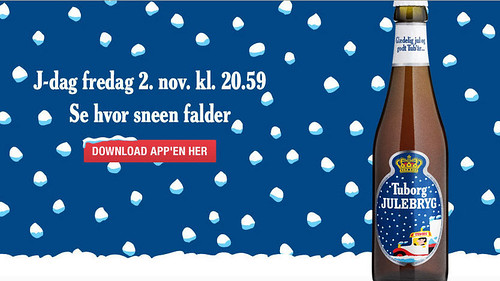
Back in 1980, they debuted an animated television commercial which was such a huge hit that it sparked the tradition for the seasonal beer’s release each year, and the same ad has now run every year since then.
By Jay Brooks

Back in September of this year, you may recall, that Beer From Early 1800s Found In Baltic Shipwreck. Near the Åland Islands, they found champagne and beer bottles in a sunken cargo ship thet is believed to have been sailing from Denmark, most likely Copenhagen, sometime between 1800 and 1830, and possibly bound for St. Petersburg, Russia.
Motor Boats Monthly recently published an update on the fate of the bottles. They also note that “experts” — no word on who — opened some of the bottles and declared them to taste “absolutely fabulous.” I wish there was something a bit more than AbFab to go on, but that’s all that’s said. In addition, there’s this exciting news:
Bottles of beer found in the wreck are thought to be the world’s oldest drinkable ale, and could provide the recipe to allow it to be replicated. Finnish authorities have approved the idea and several breweries, including one managed by Christian Ekstroem, have expressed interest in brewing the beer for today’s drinkers to taste.
I hope that happens, it would be like tasting history.
By Jay Brooks

Friday’s ad is for Carlsberg from 1925. It features an odd painting of a man with a beer stein holding some vegetable like turnips. I don’t know if Carlsberg adapted a known work of art for this advertisement or if it was commissioned for it.
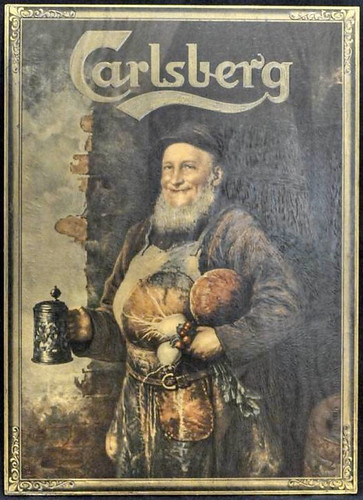
By Jay Brooks

CNN is reporting that the World’s ‘Oldest Beer’ Found in Shipwreck in the Baltic Sea off the coast of the Åland Islands. The Ålands are an autonomous group of nearly 6,000 islands near Finland. The cargo ship is believed to have been sailing from Denmark, most likely Copenhagen, sometime between 1800 and 1830 possibly bound for St. Petersburg, Russia. There’s also speculation that t may have been sent “by France’s King Louis XVI to the Russian Imperial Court.”
Initially, divers found bottles of Champagne, but later found additional bottles, some of which burst from the pressure upon reaching the surface, revealing that there was beer inside them. From the CNN report:
“At the moment, we believe that these are by far the world’s oldest bottles of beer,” Rainer Juslin, permanent secretary of the island’s ministry of education, science and culture, told CNN on Friday via telephone from Mariehamn, the capital of the Aland Islands.
“It seems that we have not only salvaged the oldest champagne in the world, but also the oldest still drinkable beer. The culture in the beer is still living.”
It will certainly be interesting to see what further analysis of the beer reveals.
